#Mirounga angustirostris
Text

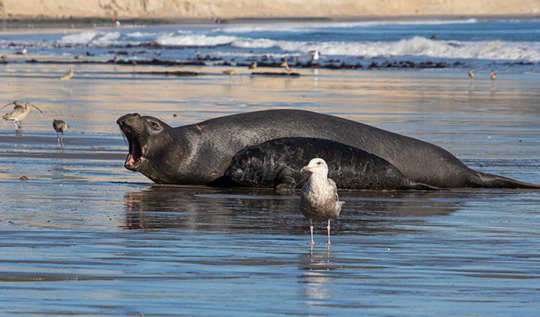
Altruism is the behavioral assistance of another in need, has ancient origins in mammalian evolution. Recently, marine ecologists has observed for the first time, an act of altruism performed by a male northern elephant seal (Mirounga angustirostris), when trying to protect a young pup in distress from drowing at high tide at a colony at Point Reyes National Seashore, California.
Researchers noted the high tide had pulled the pup into the water and it was yelling for help. The male reacted and entered to the water, it swam to the pup and very gently nudged it to shore, near to where its mother was waiting. Marine ecologists did not report the male attempted to gain an approach or interest in the mother of the pup. Male altruism is rarely seen in marine mammals, as sea lions and elephant seals, and more examples may emerge as more efforts were focused on breeding colony observations.
Photographs: Above: Male helping the pup from drowing. Below: mother and her pup reunited after the event.
Reference (Open Access): Allen et al., 2024. An observation of potential altruism by a male northern elephant seal (Mirounga angustirostris). Marine Mammal Science.
491 notes
·
View notes
Text
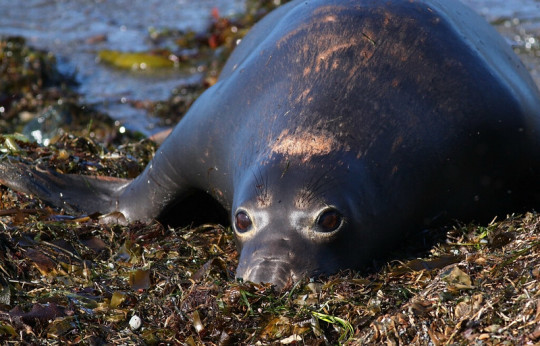
A Northern elephant seal (Mirounga angustirostris) coming ashore in San Simeon, California, USA
by Robyn Waayers
#northern elephant seal#seals#pinnipeds#mirounga angustirostris#mirounga#phocidae#pinnipedia#carnivora#mammalia#chordata#wildlife: california#wildlife: usa#wildlife: north america
1K notes
·
View notes
Text
While they may not look alike, did you know that seals are thought to be most closely related to bears, weasels, and otters? 🦭
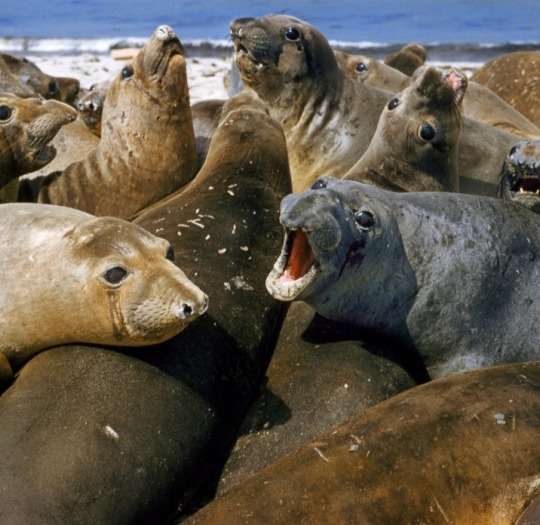
📸 1/4: Barking elephant seals, Mirounga angustirostris, bask in a huge pile on a beach.
(National Geographic Image Collection / Bates Littlehales)
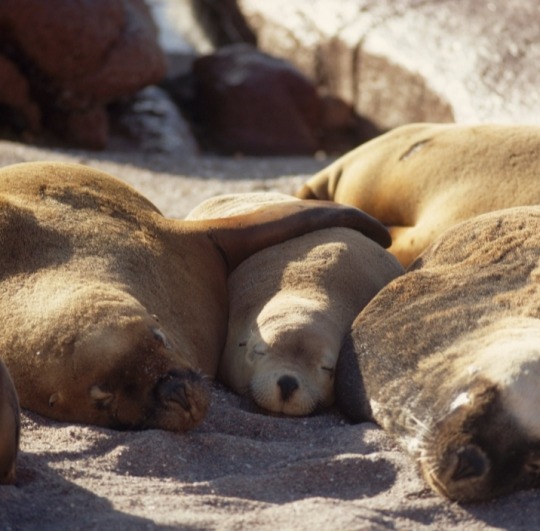
📸 2/4: Seals sleep in a tight group on the beach.
(National Geographic Image Collection / Joseph J. Scherschel)

📸 3/4: A colony of Steller's sea lions (Eumetopias jubata, also called northern sea lions) on a rocky islet in Hecate Strait.
(National Geographic Image Collection / Sam Abell)

📸 4/4: California sea lions, Zalophus californianus, lounge on a rock in British Columbia's Great Bear Rainforest.
(National Geographic Image Collection / Anne Farrar)
#seals#elephant seals#Mirounga angustirostris#sea lions#Stellar's sea lions#northern sea lions#Eumetopias jubata#California sea lions#Zalophus californianus#National Geographic#animals#marine mammals#pinnipeds#fin-footed
42 notes
·
View notes
Photo
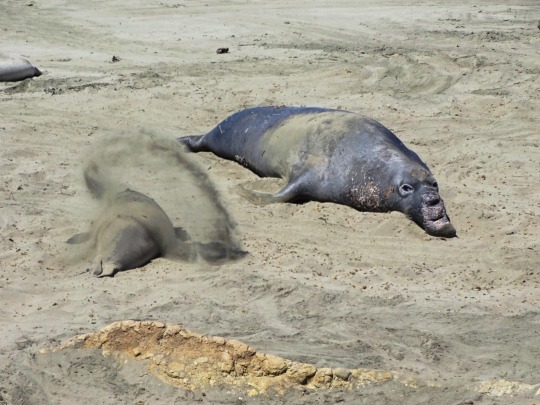
Can you stop that?
What do you think about my pic?
#What do you think about my pic?#Elephant Seals of San Simeon#Elephant Seal Vista Point#Northern elephant seal#free admission#beach#sand#original photography#wildlife#animal#tourist attraction#landmark#Mirounga angustirostris#San Luis Obispo County#fauna#male#young one#summer 2022#West Coast#California#annoyed#photo of the day
23 notes
·
View notes
Text
I haven't covered any pinniped pals for Wet Beast Wednesday yet, so for my first one I'm going big. Really big. Elephant seal big. Elephant seals are not only the largest of all pinnipeds, they are the largest of all carnivorans and the largest marine mammals that aren't cetaceans. There are two species: northern (Mirounga angustirostris) and southern (Mirounga leonina), with the southern species being the larger of the two.
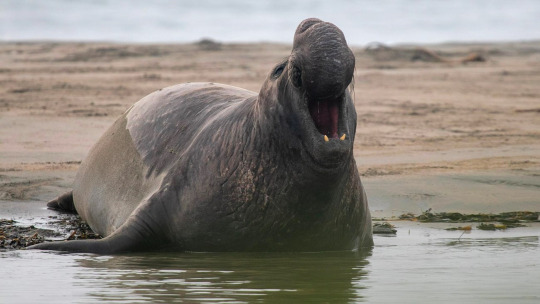
AAAAAAAAAAAAAHHHHHHHHH! (image: an elephant seal bellowing)
Elephant seals are true seals (as opposed to sea lions and walruses), meaning they lack external ears and their hind legs have fused into a sort of pseudo-flipper that allows for highly efficient swimming but is of little use when maneuvering on land. While it is common among pinnipeds for males to be larger than females, elephant seals exaggerated that with one of the most extreme size differences between sexes. Females of both species range from around 350 to 900 kg (880 to 1,980 lbs) and 2.5 to 3.6 m (8.2 to 11.8 ft) in length. Male northern seals average between 1,500 to 2,300 kg (3,300 to 5,100 lbs) and 4-5 m (13-16 ft) while southern males break the scale at 1,500 to 3,700 kg (3,300 to 8,200 lbs) and 4.2 to 5.8 m (14 - 19 ft). The southern species has the largest mass difference between sexes of any mammal, with the males averaging 5-6 times the weight of the females.

(image: male and female elephant seals chillaxing on a beach)
In addition to the size difference, the other major form of sexual dimorphism is that the male has his nose elongated into a proboscis. This snout serves two major functions: it amplifies the roars of the male allowing him to be remarkably loud and it traps and reabsorbs moisture when he exhales. This is important as the seals do not eat or drink when on land and recapturing moisture lets him stay hydrated.
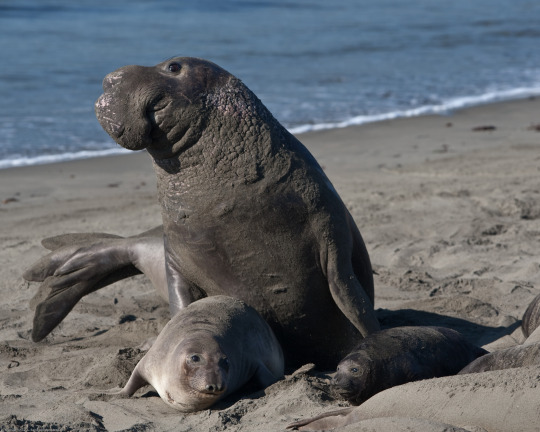
(image: a male[top], female [bottom left] and juvenile [bottom right] northern elephant seal)
Seals are adapted to spend the vast majority of their lives in the water and elephant seals are no different. They spend around 80% of their lives in the water and have many adaptations to aid in their lifestyle. Like most marine mammals, they have a thick layer of fatty blubber that preserves heat in cold water, reduces drag, and provides buoyancy. Like other seals, they can slow their heartbeats and redirect blood flow to the core of their body to avoid losing heat. Another seal adaptation is that veins returning blood to the heart grow near arteries carrying blood from the heart. This allows the cold returning blood to leech some heat from the arteries to avoid cooling down the body's core. They have a lot of blood to store oxygen, allowing for long dives. Elephant seals dive deep (averaging 300-600 m but occasionally much deeper) when searching for food. Females typically go on deeper but shorter dives than males. They can hold their breath for over 100 minutes, longer than nay non-cetacean mammal.. Their eyes are highly adapted to low-light conditions and their whiskers can sense motion in the water, both things that aid in finding food. Elephant seals are very opportunistic predators and will eat a large variety of fish and cephalopods.

(image: a female elephant seal swimming)
The 20% of time not spent at sea is mostly taken up by two yearly periods: the molting and breeding seasons. In both cases, the seal will haul out onto the beach and will not eat or drink until it has finished. Molting season lasts about a month and usually occurs in summer. Elephant seals undergo what are called catastrophic molts, where they not only shed and regrow their fur but their outer layer of skin. During the regrowth of their skin, extra blood has to be directed toward it. In the water, this would cause too much heat loss, so it must be done on land. The skin sheds in large patches and not all at once, resulting in molting seals having a ragged appearance.
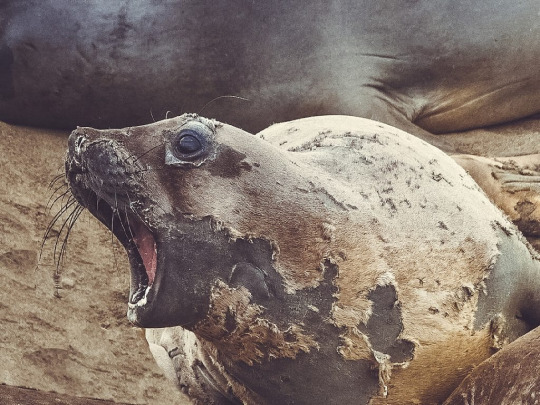
(image: a seal mid-molt)
The longer and more famous time on land is breeding season. In early spring, males will arrive on beaches and fight each other for dominance. In time, a few alpha males will claim most of the beach. These fights last even after the females arrive. Fights are very dramatic, involving posing and bellowing. If one male does not submit, they will fight by biting and slapping each other with their heads. Fights are rarely fatal, but are frequently bloody. Males have thicker skin on their chests to protect them during fights. Alpha males claim the right to mate with the females. Other males are forced to the outskirts of the beach, where they try to mate while the alpha is distracted. Some males will become betas, who help the alpha patrol his territory and drive off competing males. These betas will often try to mate while the alpha is distracted. Only the largest and strongest males can claim alpha status, and usually late in life when they have grown to their largest. After the females arrive, mothers will give birth to their pups. After birth, the female uses unique vocalizations so her pup can always recognize her. They nurse pups for up to 28 days while the males continue to fight. Elephant seal milk is extremely high in fat content, with up to 50% of the milk being fat, compared to 3.5% for cows. Some mothers may adopt the pups of others, especially if their own pup died before weaning. Weaning is very abrupt, after which the females will mate and the adults will return to the sea. The pups are left on land for up to 10 weeks, where they must learn how to swim and hunt while subsisting off the energy stores they built up while nursing. Juvenile mortality is high, with up to 50% of pups dying before reaching maturity. Adults can lose a third of their weight during breeding season.
youtube
(video: a clip from the BBC documentary Seven World One Planet about males fighting fro dominance. warning: there is blood)
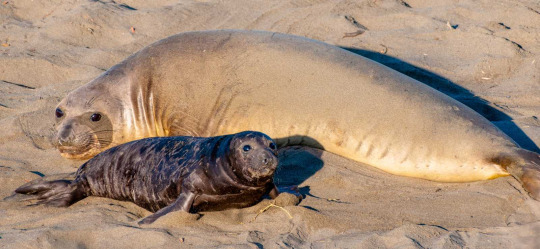
(image: a mother seal and pup)
A few pups are known as super weaners because they can grow exceptionally large during nursing. This is usually due to the pup being adopted by an additional female and therefore getting an extra dose of milk or it will steal milk from another pup. In a few cases, the mothers will just wait longer before weaning for unknown reasons. Average pups weigh between 110 and 160 kg (250 - 350 lbs) at weaning while super weaners can weigh up to 270 kg (600 lbs). They can put on so much blubber their ability to move becomes impaired. Super weaners are rarely observed again after leaving the rookery. It has been speculated that their excess blubber makes them exceptionally buoyant, reducing their ability to dive and making it harder to feed, leading to increased mortality.

(image: a chonky baby super weaner)
Both species of elephant seal were hunted to near-extinction in the 19th century as their blubber could be used to make exceptionally high-quality oil. After the hunting period ended, their numbers increased to the point both species are classified as least concern by the IUCN, though their populations have never risen to pre-hunting numbers and many areas that were historically occupied are now vacant. Genetic bottlenecks in both species has led to an increase in diseases and birth defects. El Nino is known to have a negative effect on northern seals by drastically increasing pup mortality, so this year was probably a bad one. One major limiting factor in their population growth is a lack of beaches to haul out on and many beaches they use are now protected by local laws or as UNESCO World Heritage Sites.

(Gif: a female versus a car. Round 1, fight!)
#wet beast wednesday#marine biology#biology#zoology#ecology#elephant seal#marine mammals#seal#seals#absolute unit#animal facts#cw animals fighting#chonky#Youtube
276 notes
·
View notes
Text
My favourite kind of convergent evolution is when mammals just get Big Snoots

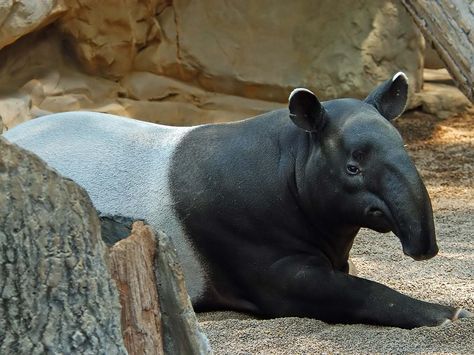

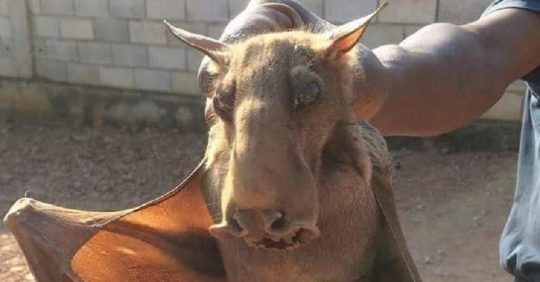

Peak fitness.
1. Saiga Antelope, Saiga tatarica
2. Malayan Tapir, Tapirus indicus
3. Northern Elephant Seal, Mirounga angustirostris
4. Hammer–headed Bat, Hypsignathus monstrosus
5. Black and Rufous Elephant Shrew, Rhynchocyon petersi
#saiga antelope#malayan tapir#northern elephant seal#hammer headed bat#black and rufous elephant shrew#animals#mammals#evolution
107 notes
·
View notes
Text
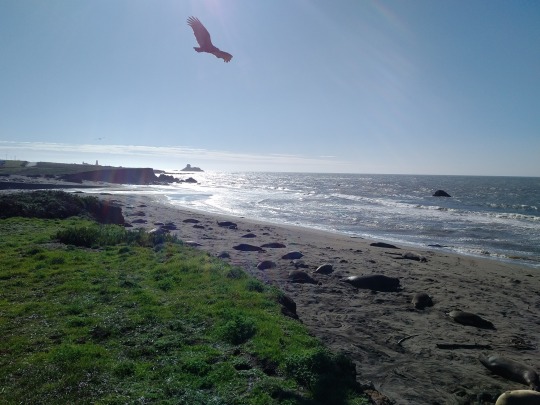
Lazy day at the beach: elephant seals (Mirounga angustirostris) and turkey vulture (Cathartes aura).
Point Piedras Blancas, California. 5 Jan 2017.
5 notes
·
View notes
Photo
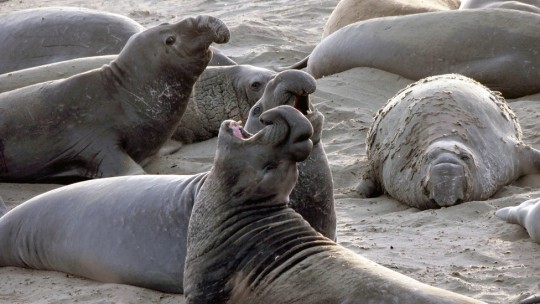

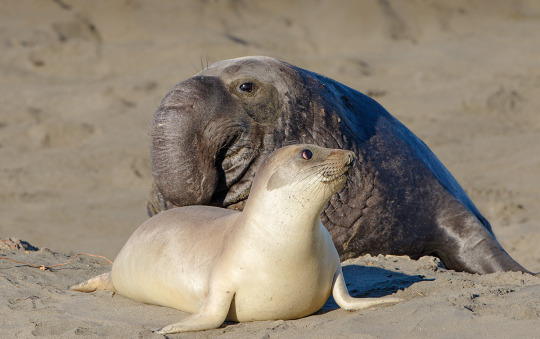
Elevating the Elephant Seal
Found all along the Pacific coast, from Alaska to Antarctica, elephant seals are famous for their size, aggression, and unusual noses. There are two species of elephant seal, both belonging to the true seal family Phocidae. The northern elephant seal (Mirounga angustirostris), as its name suggests, is dispersed along the northern coasts of North America, from the American state of Alaska all the way down to Baja California in Mexico. Southern elephant seals (Mirounga leonina) reside in Antarctic and sub-Antarctic waters up to the southern most regions of Chile and Argentina in South America. Both species migrate twice a year. The rest of the year is spent foraging in the deep waters of the Arctic or Antarctic, respectively, and these trips can take anywhere from 10,000km to 20,000, making them one of the longest migrations of any marine mammal.
The main difference between northern and southern elephant seals is their size. A male northern elephant can weigh between 1,500 and 2,300kg, while females are much smaller at 400 to 900 kg. M. angustirostris also has a shorter nose than its southern cousin. M. leonina females are similar in size to the northern elephant seals, at 400 to 900 kg, but males can easily reach up to 4,000kg, making them the largest species of seal on the planet. Both elephant seal species are generally brown in color and have only a short, bristly coat of hair. They have no ears, distinguishing them from other pinnipids like sea lions. The males, or bulls, of both species also have pronounced nose called a proboscis which serves to amplify loud mating or threatening calls.
Elephant seals come ashore twice a year in groups called colonies. In the summer, individuals gather on land to go through a ‘catestrophic molt’. During this time, the fur and the top layer of skin peel from the body. This is a necessary process because when at sea, blood is not circulated to the skin in order to keep elephant seals warm. Because of this, they are also unable to grow new hair or skin continuously. When the outer layers of skin and hair wear down or become ragged, individuals travel to traditional breeding grounds and take a month to shed their outer layers and grow a new protective coat.
From December to March, dominant males congregate at breeding grounds to compete for mating rights. The bulls are very aggressive, and fight by slamming their bodies together and raking each other with their sharp canines. Once a bull has established dominance on a beach, other males typically leave, though some may try to sneak back in to mate when the alpha bull isn’t looking. Each dominant male controls a harem of 40 to 50 females. Each female, or cow, only gives birth to one or two pups after a gestation period of 10 to 12 months. Only a few days after giving birth, she is ready to mate again.
In the meantime, the mother nurses her pup almost constantly for about a month. During this time, the female does not leave the beach to search for food, and both she and the bulls lose up to a third of their body weight. After about a month the mother weans her pup off her milk. However, some pups are “super weaners” and will search out another female-- usually one who has lost her pup-- and nurse from her for as long as possible. This gives the pup a significant size advantage: pups that are successfully weaned at 6 weeks weigh only 160kg, while super weaners can weigh up to 270 kg. The advantage of being this big is in the blubber: elephant seals require large amounts of excess fat as an energy source when food is scarce and to keep them warm when they forage in the cold waters of the northern or southern Pacific Ocean. However, the effectiveness of this strategy for survival has yet to be fully determined. The average lifespan of M. angustirostris is 9 years, while M. leonina can live up to 21 years old, though in both species males tend to die much sooner than females.
Outside the molting and mating seasons, elephant seals spend up to 90% of their lives in the water, usually alone. Foraging migrations require long, deep dives into the cold Arctic or Antarctic oceans to search for squid, rays, small sharks, and schooling fish. Some of these dives are the deepest recorded for any non-cetacean mammal at up to 1,550m below the surface. To reach these depths, elephant seals can hold their breath for almost two hours, although the average length of a dive is 20-60 minutes. Due to their large size, adult elephant seals have few predators. Some sharks, like great white sharks (Carcharodon carcharias) and southern sleeper sharks (Somniosus antarcticus) will go after adults when desperate. More common is predation on elephant seal pups; killer whales (Orcinus orca), leopard seals (Hydrurga leptonyx), and New Zealand sea lions (Phocarctos hookeri) will all hunt young pups when no parents are nearby to defend them.
Conservation status: The IUCN has rated both elephant seal species as Least Concern. In the late 1800s, northern elephant seals were thought to be hunted to extinction but a population of 20-100 individuals was discovered on Guadalupe Island off Baja California. Southern elephant seals were also hunted, but to a lesser extent. M. angustirostris and M. leonina populations are now well in the hundreds of thousands, though the population of southern elephant seals is declining once more due to disruption of their primary food sources.
Photos
Taiki Adachi
Nick Ut
Steve Zamek
If you like what I do, consider buying me a ko-fi!
#northern elephant seal#southern elephant seal#carnivora#phocidae#elephant seals#seals#pinnipeds#carnivores#mammals#coasts#coastal mammals#open ocean#open ocean mammals#pelagic fauna#pelagic mammals#north america#western north america#south america#western south america#antarctica#pacific ocean
79 notes
·
View notes
Text
MSB Ficlets: Selkie edition
Ralphie: So Wanda, if you wear that huge coat, what happens to your clothes when you become a seal?
Wanda: I… it’s like wearing a huge wetsuit over your clothes!
Ralphie: But wouldn’t that mean your clothes get wet?
Wanda: (sighs)
…
(Alternate take of “Goes Upstream”)
Ralphie: Great! There has been no salmon to fish out here!
Arnold: What about the salmon we already caught?
Ralphie: Wanda ate them all.
Arnold: Oh… she’s a shapeshifting elephant seal, and she like eating fish raw.
Wanda: Yep! (Burps)
(Serval minutes and a bus transformation later)
Ralphie: Okay, we need a plan to stop that salmon bus!
Keesha: But most of your plans had failed! What else can stop that-
Carlos: Maybe nature’s know-how can help! Wanda, do you have your-
Wanda: Seal coat? Yep!
Carlos: That seals the deal!
The other kids: CARLOS!!!
(Meanwhile… the salmon bus was swimming along until a seal ate it)
Arnold: Oh no! We’ve been eaten!
Ms. Frizzle: That’s right Arnold, we’re being eaten by a Mirounga angustirostris.
DA: According my research… that’s a northern elephant seal! But they don’t hunt in the rivers, they usually go to the deep ocean to get their prey!
Tim: So that means… Wanda is eating us!
Phoebe: At my old school, we never get eaten by a selkie!
Ms. Frizzle: But at least we can study the digestion track of a northern elephant seal!
The kids: Ms. Frizzle, do something!
Ms. Frizzle: Well, the bus does have the mind of a salmon, but you know what they say… Hit it Liz!
(The bus turns into a rocket and escapes Wanda’s mouth)
Keesha: Well, so much for that plan, Carlos.
…
(Alternate take on “In the Arctic”)
Ralphie: Great! How are we supposed to heat up with the bus all frozen?!
(Everyone glared at Wanda)
Wanda: Oh right… I have my coat!
(A few minutes later, the kids all cuddled Wanda.)
Wanda: Aaaah… now this is better! All blubber, and no cold! I’m never removing my coat until the field trip over!
2 notes
·
View notes
Text

Northern Elephant Seal (Mirounga angustirostris)
taken on the East End of Catalina Island
status: least concern
It may be hard to spot but there is an Elephant seal on that rocky beach! It was hanging out quite close to the California Sea Lion colony but was the only one of its kind there that we noticed. At first glance this seal may look worse for wear but its molting! Once a year these enormous creatures shed all their fur at once in a 'catastrophic molt' and end up looking quite ragged during the process.
#Northern Elephant Seal#Seal#Elephant Seal#animal#wildlife#animal photography#catalina island#photo#photography#canon#canon 6D mark ii
3 notes
·
View notes
Photo

Northern elephant seal (Mirounga angustirostris) on San Benitos Island in Mexico
Tim Melling
39 notes
·
View notes
Photo
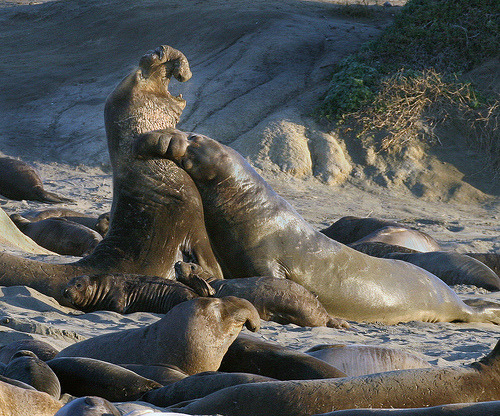
Bull Northern Elephant Seals (Mirounga angustirostris) fighting, California, USA
© Ron Wolf
#northern elephant seal#Mirounga angustirostris#mirounga#phocidae#pinnipedia#carnivora#mammalia#chordata#uploads#wildlife: california#seals
30 notes
·
View notes
Text
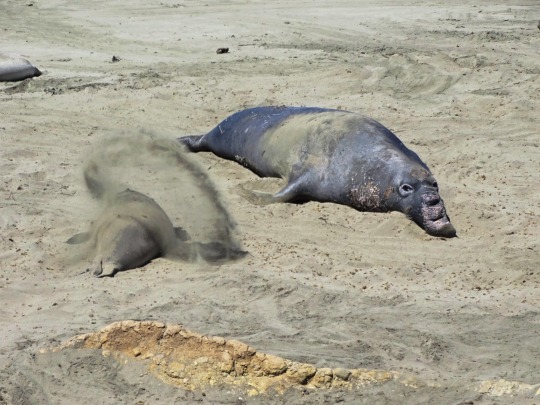
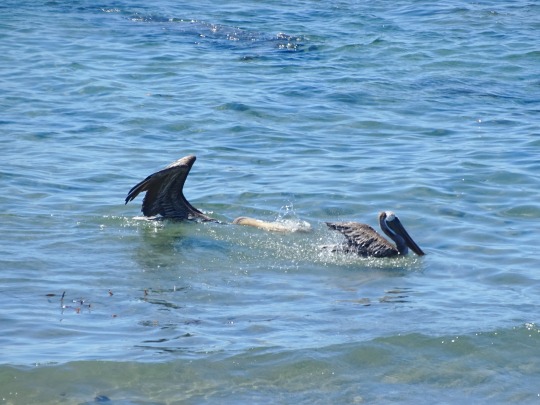
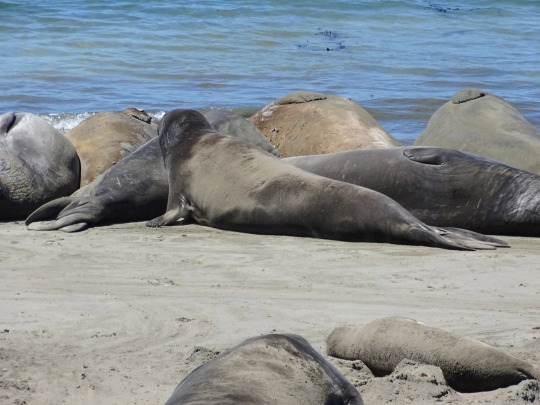





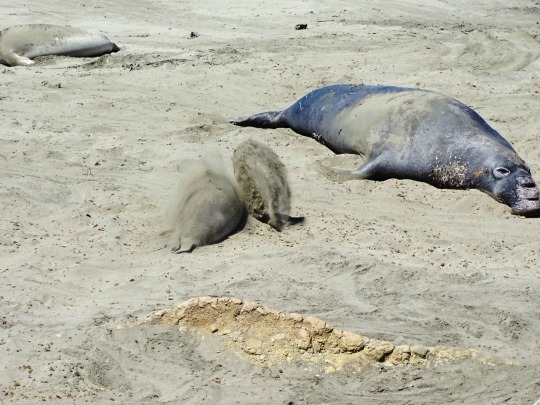
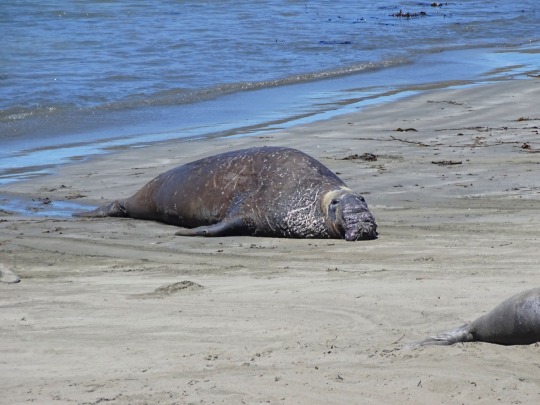
Elephant Seal Viewing Point, CA (No. 7)
In California, the population is continuing to grow at around 6% per year, and new colonies are being established; they are now probably limited mostly by the availability of haul-out space. Their breeding was probably restricted to islands, before large carnivores were exterminated or prevented from reaching the side of the ocean. Numbers can be adversely affected by El Niño events and the resultant weather conditions, and the 1997–98 El Niño may have caused the loss of about 80% of that year's pups. Presently, the northern elephant seal is protected under the federal Marine Mammal Protection Act and has a fully protected status under California law (California Fish and Game Code [FGC] § 4700).
While the population is rising in the state of California, some colonies farther south are experiencing declining populations, likely due to rising sea and air temperatures. In Baja California, the two largest colonies, in Guadalupe and San Benito, have seen consistently declining numbers for the past two decades. Seeing as populations farther north are consistently increasing, it has been hypothesized that this discrepancy is due to a change in migration patterns. As sea and air temperatures rise, Northern elephant seals may not be migrating as far south as they have previously. The climate is expected to continue warming, and southern populations are expected to continue falling.
Populations of rookery sites in California have increased during the past century. At Año Nuevo State Park, for example, no individuals were observed whatsoever until 1955; the first pup born there was observed in the early 1960s. Currently, thousands of pups are born every year at Año Nuevo, on both the island and mainland. The growth of the site near San Simeon has proved even more spectacular; no animals were there prior to 1990. Currently, the San Simeon site hosts more breeding animals than Año Nuevo State Park during winter season.
Source: Wikipedia
#pelican#bird#Elephant Seal Viewing Point#San Simeon#San Luis Obispo County#northern elephant seal#Mirounga angustirostris#Piedras Blancas Rookery#travel#original photography#vacation#tourist attraction#landmark#landscape#seascape#Pacific Ocean#wildlife#animal#California#molting#Marine mammal#USA#in the water#beach#fauna#rocks#seaweed#nature#flora#summer 2022
2 notes
·
View notes
Text
Gray, Harbor, and Northern Elephant Seals engage in a wide variety of nonprocreative heterosexual behaviors.
"Biological Exuberance: Animal Homosexuality and Natural Diversity" - Bruce Bagemihl
#book quote#biological exuberance#bruce bagemihl#nonfiction#gray seal#halichoerus grypus#harbor seal#phoca vitulina#northern elephant seal#mirounga angustirostris#nonprocreative#heterosexual
0 notes
Photo

Northern elephant seal (Mirounga angustirostris)
Photo of Bill Bouton
#northern elephant seal#elephant seal#mirounga angustirostris#mirounga#miroungini#monachinae#phocidae#phocoidea#pinnipedia#arctoidea#caniformia#carnivora#carnivoramorpha#ferae#scrotifera#laurasiatheria#boreoeutheria#eutheria#mammalia#tetrapoda#vertebrata#chordata
85 notes
·
View notes
Photo

まずキタゾウアザラシが日本に流れ着くこと、
メスでもこの大きさになること、
端から端へ行ったり来たりする最中、一定距離を置いていちいちガラスを胸ビレで触る?押す?仕草のかわいさに衝撃を受けました。
@加茂水族館
212 notes
·
View notes